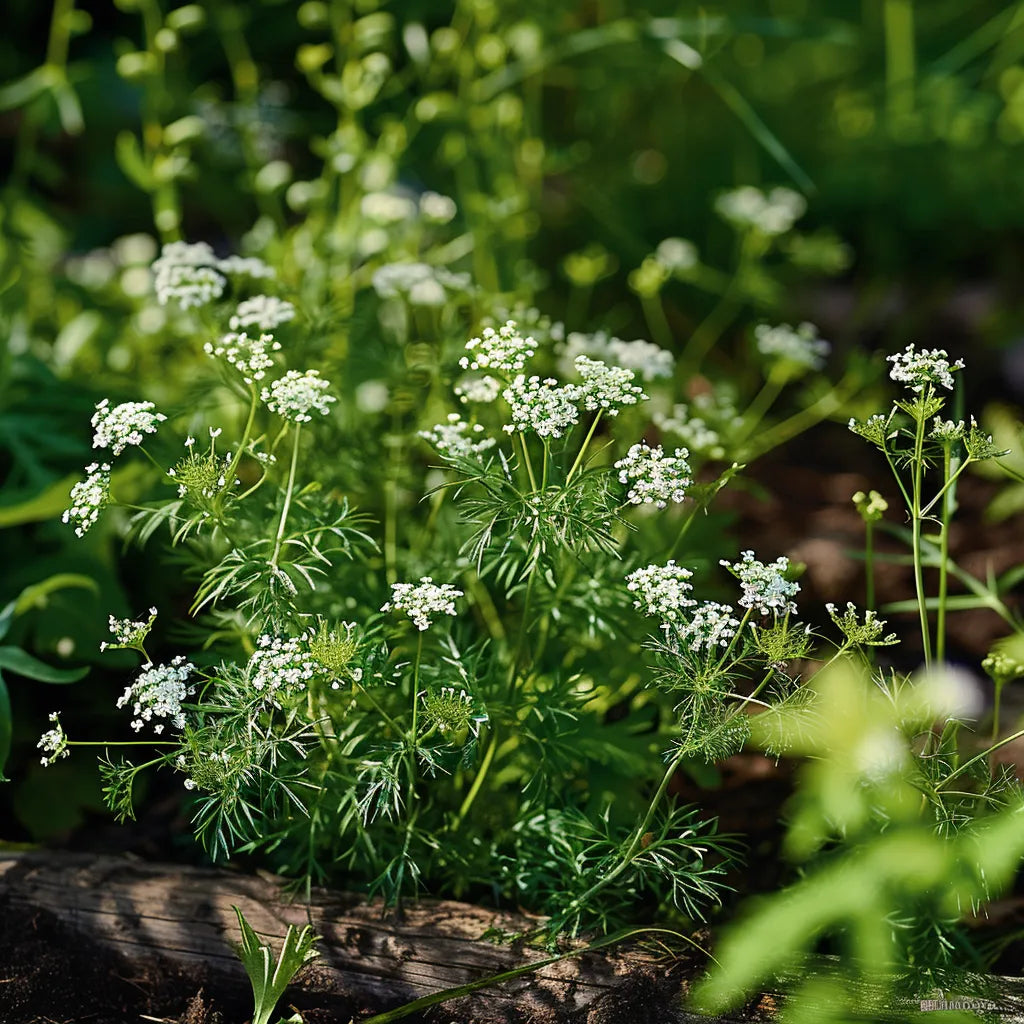
Dharaseeds
Cumin Herb Seed
Estimated delivery between February 04 and February 07.
Cumin Herb Seeds are the foundation of this aromatic, warm, and nutty herb that is a key ingredient in many cuisines around the world. From Indian curries to Mexican tacos, cumin adds a distinctive flavor that enhances a wide range of dishes. In addition to its culinary uses, cumin has medicinal benefits, such as aiding digestion and boosting the immune system. Growing your own cumin herb is a rewarding experience, offering an abundant supply of fresh seeds for culinary and health purposes.
Key Benefits
- Distinctive Flavor: Cumin provides a warm, earthy, and slightly spicy taste, perfect for enhancing the flavor of savory dishes.
- High Yield: Cumin plants produce a significant amount of seeds, ideal for both culinary use and for creating your own spice blends.
- Health Benefits: Cumin is rich in antioxidants and is known to aid digestion, improve metabolism, and support the immune system.
- Versatile Use: Ideal for a variety of dishes such as curries, soups, stews, and spice blends, as well as for herbal teas and remedies.
Variety Features
- Plant Characteristics: Cumin is an annual herb that grows 12–24 inches tall. It has feathery green leaves, delicate white or pink flowers, and produces small, aromatic seeds.
- Flavor Profile: Cumin seeds have a distinct earthy, nutty, and slightly citrusy flavor that becomes more aromatic when toasted or ground.
- Growth Habit: Cumin thrives in warm, sunny environments and requires a long growing season. It is a low-maintenance herb that grows best in well-drained, sandy soils.
- Size: Plants grow to 12–24 inches in height, producing small, oval seeds that are harvested when fully mature.
Planting Instructions
Planting Season
- Outdoor Planting: Plant cumin seeds outdoors after the last frost, typically in late spring or early summer when temperatures reach 75°F–85°F (24°C–29°C).
- Indoor Planting: Start seeds indoors 4–6 weeks before the last frost and transplant them once the soil warms up.
Planting Details
- Planting Depth: Sow seeds about 1/4 inch deep in well-prepared soil.
- Spacing: Space seeds 4–6 inches apart, and ensure rows are spaced 12–18 inches apart to allow proper air circulation.
- Soil Requirements: Prefers well-drained, sandy, or loamy soil with a pH of 6.5–7.0.
- Sunlight: Cumin requires full sun for at least 6 hours per day. It thrives in hot, dry climates and should be protected from frost.
Care Instructions
- Watering: Keep the soil consistently moist, but not waterlogged. Cumin is drought-tolerant once established but should be watered regularly during dry spells.
- Fertilization: Use a balanced organic fertilizer or compost to promote healthy growth. Apply at planting time and again in mid-season.
- Weeding: Weed regularly around the cumin plants to reduce competition for nutrients. Mulching helps retain moisture and suppress weed growth.
- Pests and Diseases: Cumin can attract aphids and spider mites. Use organic pest control methods, such as neem oil or insecticidal soap, to manage pests.
Harvesting
- Timing: Cumin seeds are ready for harvest 120–150 days after planting, when the seed heads turn brown and dry.
- Method: Harvest by cutting the seed heads and allowing them to dry further. Once fully dry, gently shake or rub the seed heads to release the seeds.
- Seed Collection: Once the seeds are fully dry, collect them by rubbing the seed heads between your hands or using a fine sieve.
Storage
- Short-Term: Store cumin seeds in an airtight container in a cool, dry place for up to 6 months.
- Long-Term: For longer storage, cumin seeds can be frozen to preserve their flavor and essential oils for up to a year.
Culinary Uses
- Spice Blends: Cumin is a primary ingredient in curry powder, garam masala, taco seasoning, and other spice blends.
- Curries and Soups: Add cumin to curries, soups, and stews for a rich, earthy depth of flavor.
- Grilled Meats: Sprinkle cumin on meats before grilling for added flavor and aroma.
- Herbal Tea: Brew cumin seeds into a tea to aid digestion and improve metabolism.
- Baked Goods: Cumin seeds can be incorporated into bread and savory pastries for a unique, aromatic twist.
Conclusion
Cumin Herb Seeds are an essential addition to any garden, providing a flavorful and aromatic herb that is invaluable in the kitchen. Whether used in savory dishes, spice blends, or herbal remedies, cumin is a versatile and health-benefiting herb that can be grown with ease. By growing your own cumin herb, you ensure a fresh and high-quality supply of this aromatic seed, perfect for elevating your cooking and supporting your health.








